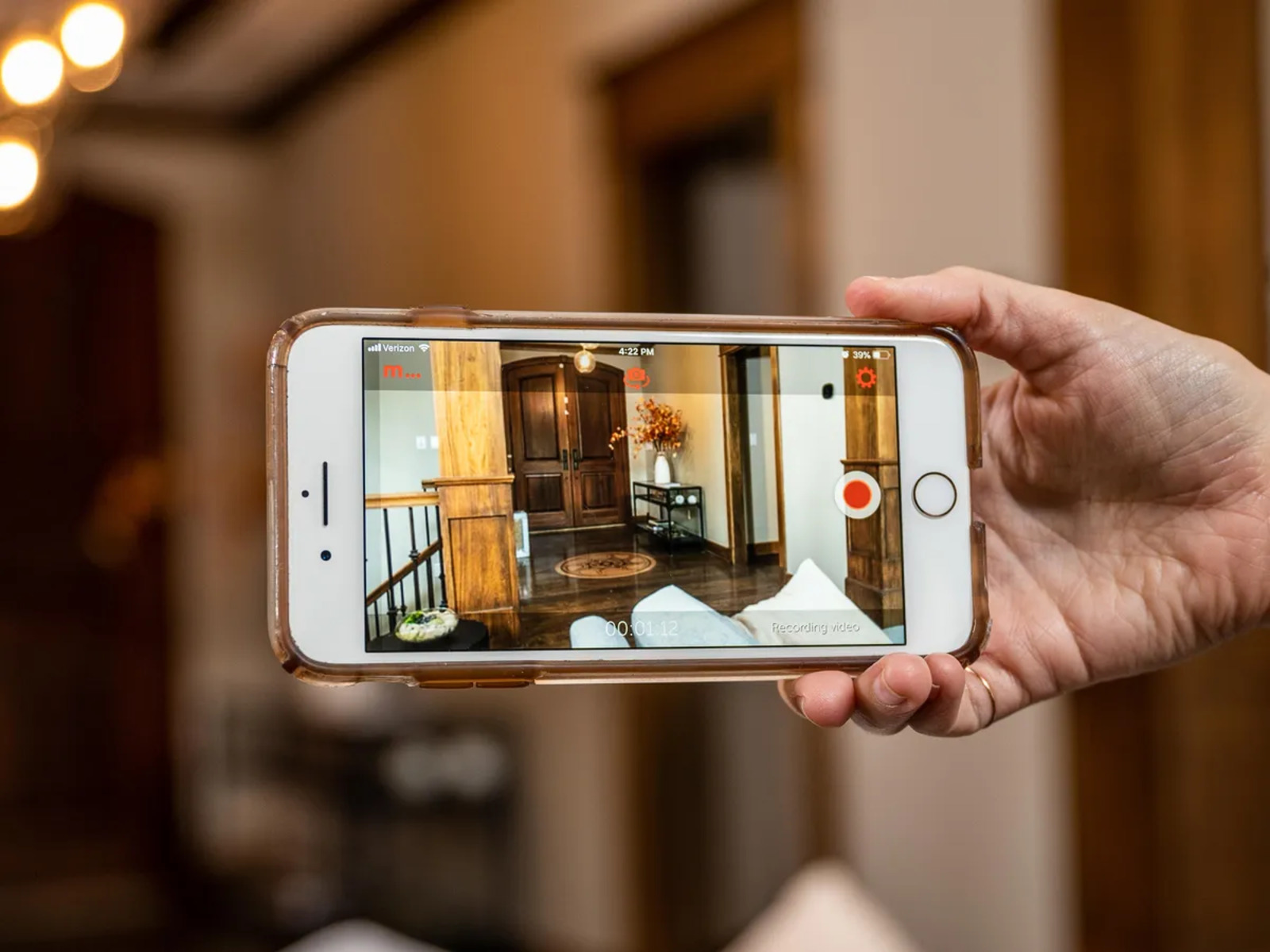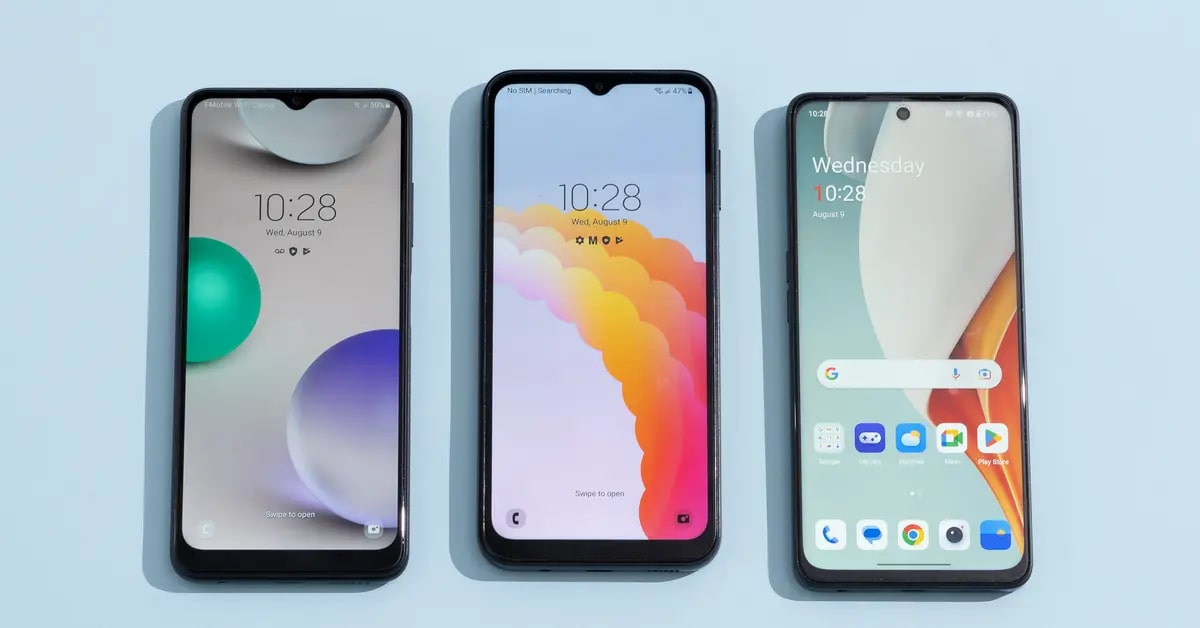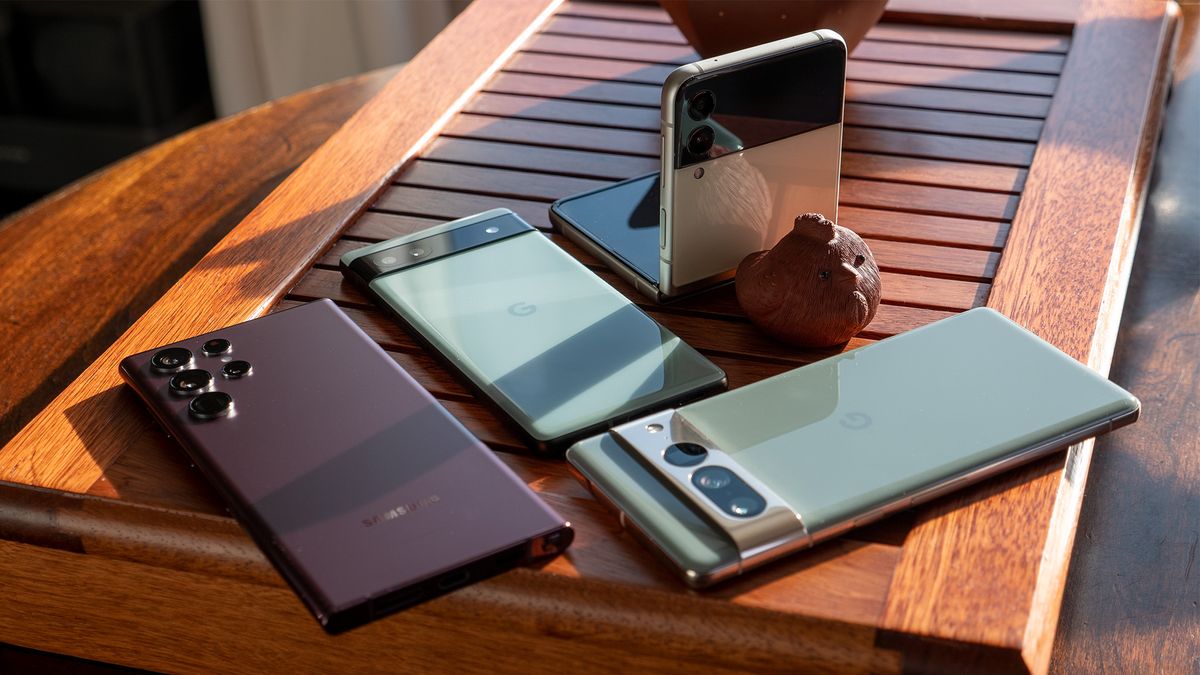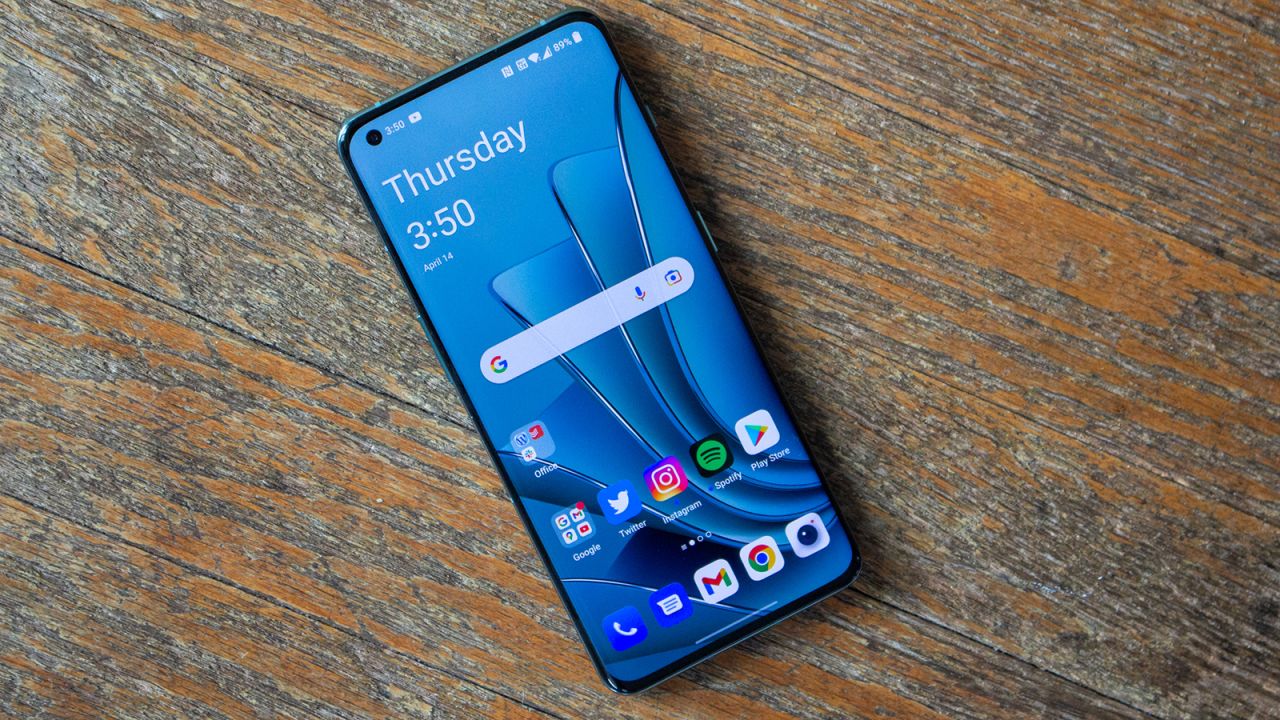Introduction
Welcome to the fascinating world of smartphone cameras, where capturing moments and expressing creativity has never been easier. From selfies to stunning landscapes, smartphone cameras have become the go-to tool for everyday photography.
In today’s fast-paced digital age, the demand for high-quality and convenient photography has skyrocketed. Smartphones have stepped up to the plate, offering increasingly sophisticated camera capabilities that rival those of dedicated digital cameras. But have you ever wondered how exactly a smartphone camera works?
In this article, we will delve into the inner workings of a smartphone camera, uncovering the technology behind the stunning images we capture. From the image sensor to the lens, image processing, camera software, and other exciting features, we will explore how each component contributes to creating the perfect shot.
So, whether you’re a photography enthusiast looking to expand your knowledge or simply curious about how your smartphone camera functions, sit back, relax, and get ready to embark on a journey through the world of smartphone photography.
Understanding the Basics of Smartphone Cameras
Before we dive into the technical aspects, let’s start with the basic principles that underpin smartphone cameras. At its core, a smartphone camera works by using a combination of hardware and software to capture and process images.
The main components of a smartphone camera include the image sensor, lens, image processing algorithms, camera software, and additional features like optical image stabilization and depth sensing. Each of these elements plays a crucial role in capturing, enhancing, and delivering stunning photos.
The image sensor is the heart of any camera, including smartphone cameras. It acts as the digital equivalent of traditional film, converting light particles, or photons, into digital signals. Most smartphones use a type of image sensor called a complementary metal-oxide-semiconductor (CMOS) sensor. This sensor captures the light that enters the lens and converts it into electrical signals.
The lens, located on the back of your smartphone, is responsible for focusing and refracting light onto the image sensor. It consists of multiple glass elements arranged in a specific configuration to correct lens aberrations and achieve sharp and clear photos.
Once the light passes through the lens and reaches the image sensor, it is converted into electrical signals. These signals are then processed by the smartphone’s image processing algorithms. The image processing algorithms analyze the captured data, adjust the exposure, color balance, sharpness, and other parameters to optimize the image quality.
But how does the smartphone know exactly what to adjust? This is where the camera software comes into play. The camera software provides various shooting modes, such as portrait mode, night mode, and panorama mode, giving you more control over your photography. Additionally, it allows you to apply filters, adjust settings, and even take multiple shots in rapid succession.
Modern smartphone cameras also come equipped with additional features such as optical image stabilization (OIS) and depth sensing. OIS helps eliminate unwanted camera shake, resulting in sharper images, especially in low light conditions or when shooting videos. Depth sensing, meanwhile, enables the camera to distinguish between foreground and background, allowing for the creation of stunning bokeh effects and portrait shots with a blurred background.
Understanding these basic principles lays a solid foundation for exploring the intricate workings of smartphone cameras. In the next sections, we will delve deeper into the individual components and features, unraveling the magic behind smartphone photography.
The Image Sensor: Capturing Light and Colors
The image sensor is one of the key components of a smartphone camera, responsible for capturing light and colors to form the foundation of your photos. It is a semiconductor device that converts incoming light particles (photons) into electrical signals, which are then processed to create the final image.
Most smartphone cameras use a type of image sensor called a complementary metal-oxide-semiconductor (CMOS) sensor. CMOS sensors are known for their low power consumption, high speed, and excellent noise performance. These sensors are made up of millions of light-sensitive pixels arranged in a grid pattern.
Each pixel on the image sensor is capable of capturing light and converting it into an electrical charge. The intensity of the charge depends on the amount of light that hits the pixel. The pixels are also sensitive to different wavelengths of light, allowing them to capture colors.
Once the light enters the camera through the lens, it first passes through a series of color filters placed on top of the pixels. These color filters, commonly known as the Bayer filter array, separate the incoming light into red, green, and blue components. This color information is essential for creating accurate and vibrant colors in the final image.
After passing through the color filters, the light hits the individual pixels on the image sensor. Each pixel converts the incoming light into an electrical charge proportional to the intensity of the light. This charge is then read out by the camera’s circuitry and converted into digital values.
To capture more detail and improve low-light performance, smartphones employ various techniques such as pixel binning and larger pixel sizes. Pixel binning involves combining the charges from neighboring pixels to create a single pixel value. This helps reduce noise and improves sensitivity, especially in low-light conditions. Larger pixel sizes can achieve similar benefits, as they can capture more light and provide better dynamic range.
Once the electrical charges have been converted into digital values, they undergo further processing to optimize the image quality. This includes demosaicing, noise reduction, sharpening, and adjusting the exposure and color balance. The smartphone’s image processing algorithms play a significant role in this stage, fine-tuning the captured data to produce the best possible image.
The image sensor is a critical component in a smartphone camera, capturing light and colors to form the foundation of your photos. It works in tandem with other components and software algorithms to create stunning images that allow you to capture and relive your precious moments.
The Lens: Focusing and Refracting Light
The lens is a fundamental component of a smartphone camera, responsible for focusing and refracting light to create clear and sharp images. It plays a crucial role in determining the quality, clarity, and perspective of your photos.
The lens is located on the back of your smartphone, right in front of the image sensor. It is typically made up of multiple glass elements that work together to correct lens aberrations and capture light in the most accurate way possible. These glass elements are precisely engineered and arranged in a specific configuration to achieve optimal image quality.
One of the key functions of the lens is to focus light onto the image sensor. By adjusting the distance between the lens and the image sensor, the smartphone camera can control the focus and determine which parts of the scene will be in sharp focus. This is especially important when photographing subjects at different distances, allowing you to create a sense of depth and draw attention to specific objects.
When light enters the lens, it undergoes a process called refraction. This is the bending of light as it passes through different materials with varying refractive indices, such as glass. The refraction of light helps to direct and converge the incoming rays onto the image sensor. It ensures that the light is evenly distributed across the sensor, resulting in a sharp and well-exposed image.
The glass elements inside the lens also contribute to reducing lens aberrations such as distortion, chromatic aberration, and vignetting. Distortion occurs when straight lines in the scene appear curved or distorted in the final image. Chromatic aberration is the presence of color fringing or blurring at the edges of objects, caused by the lens’s inability to focus all wavelengths of light at the same point. Vignetting, on the other hand, refers to the darkening of the corners of an image.
To minimize these aberrations, smartphone lenses are equipped with different types of lens elements, such as aspherical elements and low-dispersion elements. Aspherical elements are specifically shaped to correct distortion, while low-dispersion elements help to reduce chromatic aberration. These advanced lens designs ensure that the final image is as accurate and true to life as possible.
When you tap to focus on your smartphone’s screen, you are instructing the camera to adjust the lens position and focus on a specific area. This activates the lens’s autofocus mechanism, which uses various methods like contrast detection or phase detection to precisely focus on the desired subject.
The lens of a smartphone camera performs the critical task of focusing and refracting light to create clear and sharp images. Its optical design, along with other components and software algorithms, contributes to the overall image quality and enables you to capture stunning photos with your smartphone.
Image Processing: Enhancing and Adjusting Photos
Image processing is a crucial step in the smartphone camera pipeline, where captured images undergo various adjustments and enhancements to improve their overall quality. This process involves a combination of hardware and software algorithms working together to optimize colors, sharpness, exposure, and more.
As soon as an image is captured by the image sensor, it undergoes initial processing to convert the electrical signals into a digital format. This involves digitizing the data and applying noise reduction algorithms to minimize any unwanted artifacts or graininess that may be present in the image.
Once the initial processing is complete, the smartphone’s image processing algorithms kick into gear. These algorithms analyze the image data and make adjustments to enhance the overall appearance of the photo. Some of the key aspects that image processing algorithms address include:
Exposure: Adjusting the brightness and contrast levels of an image to ensure optimal visibility of details in both the shadows and highlights.
Color Balance: Correcting and adjusting the color tones in an image to ensure accurate representation of colors. This includes white balance adjustments to neutralize any color casts caused by different lighting conditions.
Sharpness: Enhancing the clarity and sharpness of details in an image through algorithms that selectively increase contrast on edges.
Noise Reduction: Reducing the digital noise that may be present in an image, especially in low light conditions or at higher ISO settings. This helps to produce cleaner and smoother images.
Dynamic Range: Expanding the dynamic range of an image to capture details in both bright and dark areas. This is achieved through techniques like tone mapping or HDR (High Dynamic Range) processing.
Smartphone cameras also offer various shooting modes and filters that can be applied during the image processing stage. These modes provide additional creative control and can be used to achieve specific effects such as black and white photography, sepia tones, or vibrant color enhancements.
The image processing algorithms work in conjunction with the smartphone’s camera app and settings, allowing users to have some control over the final result. Options like exposure compensation, white balance adjustment, and manual shooting modes enable users to fine-tune the image processing parameters to their liking, giving them more flexibility in capturing their desired look and feel.
Image processing is instrumental in transforming a raw image captured by the smartphone’s image sensor into a visually appealing photograph. The innovative algorithms and technologies employed in the image processing stage play a significant role in optimizing and enhancing the overall image quality.
Camera Software: Making Magic Happen
Behind every great smartphone camera is powerful camera software that brings a touch of magic to your photography. The camera software plays a crucial role in delivering a seamless user experience and unlocking a world of creative possibilities.
Camera software is responsible for controlling various aspects of the camera’s operation, allowing users to capture their desired shots. It provides an intuitive user interface, giving users access to different shooting modes, settings, and features.
One of the primary functions of camera software is to provide autofocus capabilities. When you tap on the screen to focus on a specific subject, the software analyzes the contrast or phase information to adjust the lens position and bring the subject into sharp focus. This ensures that your photos are clear and well-focused.
In addition to autofocus, camera software also offers other focus modes such as manual focus or continuous autofocus. These options allow users to have more control over the focusing process, particularly useful in specialized photography scenarios like macro shots or action photography.
Another critical aspect of camera software is the inclusion of shooting modes. These modes cater to various photography styles or scenarios and enable users to achieve specific effects or capture unique moments. Common shooting modes include portrait mode, landscape mode, night mode, macro mode, and more. Each mode adjusts the camera settings and image processing algorithms to optimize the result for the intended purpose.
Camera software also incorporates features like burst mode, which allows you to capture a series of photos in quick succession with just a press and hold of the shutter button. Burst mode is especially handy for capturing fast-moving subjects or ensuring that you don’t miss the perfect shot in a fast-paced environment.
Additionally, camera software offers different customization options, allowing users to adjust settings such as exposure compensation, ISO, shutter speed, and white balance. These settings empower photographers to fine-tune the image capture process and achieve their desired creative vision.
Software updates released by smartphone manufacturers often bring new and improved features to the camera app. This can include enhancements to the image processing algorithms, new shooting modes, or even AI-powered features like scene recognition or object tracking. Regular updates ensure that your smartphone camera continues to evolve and improve over time.
The camera software is the driving force behind the seamless operation and user-friendly interface of smartphone cameras. It enriches the photography experience, allowing users to explore their creative potential and capture stunning images with just a tap of their fingertips.
Optical Image Stabilization: Keeping Your Photos Sharp
One of the key features incorporated into many smartphone cameras is Optical Image Stabilization (OIS), which plays a vital role in capturing sharp and clear photos, especially in challenging shooting conditions.
In simple terms, Optical Image Stabilization refers to the mechanism that compensates for unintentional camera movement, commonly known as camera shake. OIS reduces the blurring caused by small hand movements or vibrations, resulting in sharper and more detailed images.
So how does Optical Image Stabilization work? Within the smartphone camera, there is a small gyroscope or accelerometer that detects any movement or vibrations. When the camera detects these motions, tiny motors or actuators move the lens elements within the lens assembly to counteract the movement and maintain a stable image.
The movement of the lens elements compensates for the motion of the camera, ensuring that the image remains steady on the image sensor. By stabilizing the image, OIS allows for longer exposure times without resulting in blurry photos.
OIS is particularly beneficial in low-light situations or when using a zoom lens. In low-light conditions, the camera often requires slower shutter speeds to capture enough light. However, slower shutter speeds increase the chances of camera shake, resulting in blurry images. OIS helps in these scenarios by counteracting any small movements and minimizing the chances of motion blur.
Similarly, when using a zoom lens, even slight movements can have a more pronounced impact on image stability. OIS helps to mitigate this by compensating for small hand movements, allowing for sharper images at longer zoom ranges.
Modern smartphone cameras utilize several advanced techniques to enhance the effectiveness of Optical Image Stabilization. Some devices employ a combination of optical and digital image stabilization to achieve even better results. This combination allows for greater compensation of camera movement, resulting in improved image sharpness.
It’s worth noting that Optical Image Stabilization is particularly effective for still photography and can significantly improve image quality. However, when capturing moving objects or shooting videos, additional stabilization methods, such as Electronic Image Stabilization (EIS) or a combination of both OIS and EIS, may be employed for optimal results.
Whether you’re capturing photos in low light, shooting videos on the move, or trying to capture those perfect long-exposure shots, Optical Image Stabilization is a valuable feature that ensures your images remain sharp and clear, free from the unwanted effects of camera shake.
Depth Sensing and Portrait Mode: Creating Beautiful Bokeh
If you’ve ever marveled at professional-looking photos with a blurred background, chances are it was taken using the depth sensing technology and portrait mode feature found in many smartphone cameras.
Depth sensing refers to the ability of a smartphone camera to measure the distance between the camera and various objects in the frame. This technology allows the camera to differentiate between the foreground subject and the background, creating a sense of depth in the image. The most common method used for depth sensing is through the use of a secondary camera, usually a depth sensor or a dedicated depth-sensing lens.
Portrait mode leverages the depth sensing technology to automatically blur the background and put the focus squarely on the subject. By isolating the subject and blurring the background, this feature can produce stunning professional-looking photos with a shallow depth of field, also known as bokeh effect.
When you activate portrait mode and focus on your subject, the camera uses depth sensing to understand the relative distances between different objects in the scene. This information then allows the camera software to intelligently separate the subject from the background.
Once the subject is identified, the camera software applies a blur effect to the background, simulating the aesthetic achieved by using a larger aperture on a traditional camera lens. The result is a distinct separation between the subject and the background, with the subject in sharp focus and the background beautifully blurred.
Depth sensing technology and the powerful algorithms behind portrait mode have evolved significantly in recent years. In addition to creating bokeh, many smartphones now offer additional features within portrait mode, such as adjustable aperture settings or real-time preview of the depth effect. These advancements give users more creative control, allowing them to experiment and achieve desired effects in their portraits.
It’s important to note that while depth sensing and portrait mode can produce visually stunning images, there are limitations. Factors such as inconsistent lighting conditions, complex subjects with intricate details, or objects too close to the subject can sometimes lead to imperfect results. However, with continuous advancements in technology, these limitations are being continually addressed and improved upon.
Depth sensing and portrait mode have revolutionized smartphone photography, empowering users to capture professional-quality portraits with that desirable bokeh effect. With just a tap, you can create stunning photos that make your subject stand out and elevate the overall aesthetic of your images.
Low Light Photography: Letting in More Light
One of the challenges in smartphone photography is capturing clear and well-exposed images in low light conditions. However, with advancements in technology, smartphone cameras now offer various features and techniques to improve low light photography and let in more light.
Low light photography refers to capturing images in environments with limited available light, such as indoors, at night, or in dimly lit settings. In these situations, the camera needs to gather as much light as possible to produce a well-exposed image with minimal noise.
One common feature found in many smartphone cameras is a wider aperture. The aperture is the opening through which light enters the lens. A wider aperture allows more light to pass through, resulting in brighter and better-exposed images. Some smartphones even have a variable aperture that can adjust automatically based on the lighting conditions.
Another technique used to improve low light photography is increasing the sensor sensitivity. This is done by adjusting the ISO (International Standards Organization) settings. Increasing the ISO allows the sensor to amplify the available light, making the image appear brighter. However, it’s important to note that higher ISO values can introduce digital noise or graininess in the image. To combat this, smartphone cameras utilize advanced noise reduction algorithms to minimize the noise while preserving image details.
In addition to wider apertures and higher ISO settings, some smartphone cameras feature larger pixels on the image sensor. Larger pixels are capable of capturing more light, resulting in better low light performance and improved dynamic range. This allows for more details to be captured in shadow areas and reduced overexposure in brighter areas of the image.
Smartphone cameras also incorporate different shooting modes or features specifically designed for low light conditions. For instance, night mode or low light mode uses longer exposure times to capture more light. During this extended exposure, the camera steady itself with optical or electronic image stabilization to counteract any potential camera shake. Night mode then combines multiple exposures or utilizes advanced algorithms to enhance image quality, reduce noise, and produce a well-balanced photo.
Advancements in computational photography have revolutionized low light photography in smartphones. Multi-frame image stacking, machine learning, and AI algorithms are now utilized to combine multiple images taken at different exposure settings and intelligently process them to produce a final image with improved brightness, detail, and reduced noise.
Low light photography has come a long way in smartphone cameras, enabling users to capture better images in challenging lighting conditions. With wider apertures, increased sensor sensitivity, noise reduction algorithms, and dedicated low light shooting modes, smartphone cameras continue to push the boundaries of low light photography, giving you the ability to capture stunning scenes even in the darkest of environments.
The Front Camera: Taking the Perfect Selfie
The rise of social media and the selfie culture has propelled the front camera of smartphones into the spotlight. The front camera, also known as the selfie camera, has evolved to meet the growing demand for high-quality self-portraits. With its dedicated features and enhancements, it aims to enable users to capture the perfect selfie.
Front cameras have significantly improved over the years, with higher megapixel counts, wider apertures, and advanced image processing algorithms. These advancements contribute to better image quality, sharper details, and more vibrant colors in selfies.
Many front cameras now offer specialized modes and features designed specifically for selfie photography. These modes include beauty mode, which applies subtle filters and adjustments to soften skin tones, remove blemishes, and enhance facial features. It allows users to achieve a flawless and more polished look in their self-portraits.
Portrait mode is another popular feature found in front cameras. This mode utilizes depth sensing technology to separate the subject from the background, blurring the background to create a professional-looking bokeh effect. By applying this effect, the front camera can bring more attention to the subject and add a sense of depth to the photo.
Front cameras also incorporate wide-angle lenses or wider field of view to accommodate more people in the frame or capture more of the surrounding environment. This is especially useful for group selfies or capturing scenic backgrounds while ensuring everyone is included in the shot.
Lighting is crucial for capturing great selfies, and front cameras have features to help with this. Many front cameras now offer screen flash or front-facing LED flash, which provides additional light when capturing selfies in low light conditions. Some front cameras even use screen brightness optimization algorithms to achieve balanced lighting for selfies taken in any lighting environment.
Intelligent algorithms and machine learning are also becoming prevalent in front cameras. These algorithms analyze facial features, expressions, and lighting conditions to optimize the image processing settings and produce the best possible selfie. They can recognize and enhance specific facial features, detect smiles or blink detection, apply background or scene recognition, and more.
Front cameras have become an essential tool for self-expression, allowing individuals to capture their unique moments and showcase their personalities. With their dedicated modes, wider lenses, advanced image processing, and intelligent features, front cameras are designed to cater specifically to the needs of selfie enthusiasts, ensuring that every selfie turns out picture-perfect.
Conclusion
Smartphone cameras have come a long way in revolutionizing the way we capture and share our precious moments. With advancements in technology, these compact devices have become powerful tools that deliver stunning imagery and unparalleled convenience. Understanding the inner workings of smartphone cameras helps us appreciate the impressive capabilities they offer.
We have delved into the basics of smartphone cameras, exploring the image sensor’s role in capturing light and colors, the lens’s function in focusing and refracting light, and the intricate process of image processing that enhances and adjusts photos. We have also explored the magic of camera software, the effectiveness of optical image stabilization, and the creative possibilities brought about by depth sensing and portrait mode. Additionally, we witnessed how low light photography has improved, thanks to wider apertures, higher sensor sensitivity, and specialized shooting modes. We also discovered the features catered specifically to selfie enthusiasts offered by front cameras.
Smartphone cameras have undoubtedly democratized photography, making it accessible to anyone with a smartphone. They allow us to capture beautiful landscapes, candid moments, and even artistic self-portraits with just a few taps on a screen. The continuous advancements in technology and the integration of innovative features enable us to push the boundaries of what is possible in smartphone photography.
As smartphone camera technology continues to evolve, we can look forward to even more exciting features and enhancements that further expand our creative opportunities. From improved image sensors to advanced image processing algorithms, the future of smartphone photography holds great promise.
So, next time you take out your smartphone to capture a precious moment, remember the intricate workings behind the scenes, the combination of hardware and software, and the thoughtful engineering that goes into making your smartphone camera a powerful tool for self-expression and storytelling.
Embrace this ever-evolving world of smartphone cameras, and let your creativity soar as you capture the world through your lens, one pixel at a time.

























